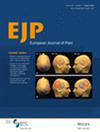HOPE for Hypermobile Ehlers–Danlos Syndrome (hEDS) and Hypermobility Spectrum Disorder (HSD)—A Pilot Randomised Controlled Trial of Feasibility, Acceptability and Appropriateness
Abstract
Background
Feasibility and effectiveness of online pain management programs for chronic widespread pain conditions have been shown; yet, there are no empirically evaluated programs for hypermobile Ehlers–Danlos syndrome (hEDS) or hypermobility spectrum disorder (HSD). Bridging this gap, the Hypermobile Online Pain managemEnt (HOPE) program was developed with stakeholder input to be pilot tested.
Methods
We conducted a randomised controlled trial of the HOPE program to assess Feasibility of Intervention Measure (FIM), Acceptability of Intervention Measure (AIM) and Intervention Appropriateness Measure (IAM) and eight clinical effectiveness outcomes. Intervention participants were given 8 weeks to complete 12 self-paced modules, while control participants continued treatment as usual. Participants were assessed at baseline, post-treatment and 3 months post-treatment using online surveys.
Results
Seventy-two participants were recruited and randomised. Two control participants withdrew before starting, leaving 34 controls and 36 intervention participants for analysis. In all, 81%–91% agreed/completely agreed that the HOPE program was feasible with mean FIM score of 4.3/5 (SD 0.7), 62%–76% agreed/completely agreed that it was acceptable with mean AIM score of 3.9/5 (SD 0.96) and 67%–76% agreed/completely agreed that it was appropriate with mean IAM score of 4.0/5 (SD 0.9). Only two clinical effectiveness outcomes were significantly improved in the intervention group, with moderate and small effect sizes in worst pain intensity (Cohen's d = 0.63) and impact of hypermobility (Cohen's d = 0.32) at 3 months post-intervention, respectively.
Conclusion
The HOPE program seemed feasible, acceptable and appropriate, with preliminary improvements in worst pain intensity and impact of hypermobility. Our findings warrant a fully powered trial to further explore the clinical effectiveness of this online pain intervention.
Significance Statement
Pain is of high concern among people with hypermobile Ehlers–Danlos syndrome (hEDS) or hypermobility spectrum disorder (HSD), yet there are limited online pain management resources for them. This pilot trial of the novel Hypermobile Online Pain managemEnt (HOPE) program is important in guiding the creation of evidence-based and stakeholder-relevant online resources. Promising results suggest the importance of further refinement and retesting its effectiveness before wider implementation among the hEDS/HSD population so as to empower them in pain self-management.


 求助内容:
求助内容: 应助结果提醒方式:
应助结果提醒方式:


